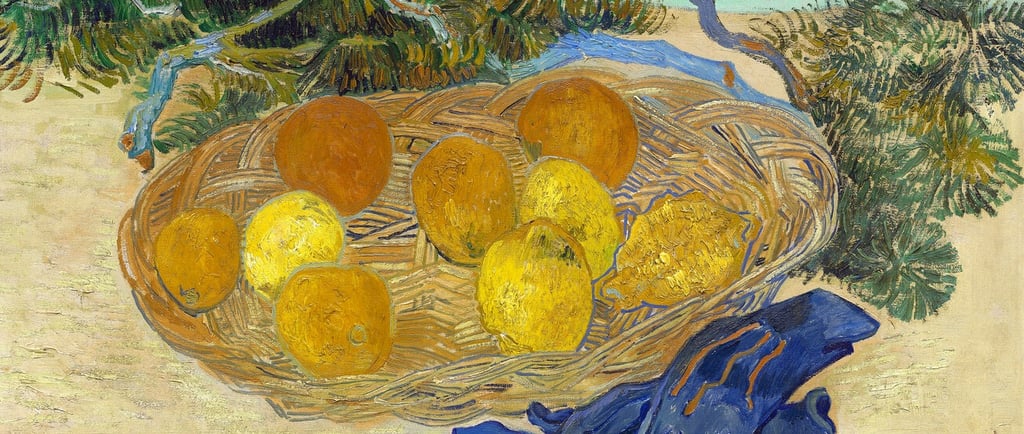🔶 A Color Named After a Fruit! The Story of Orange 🍊✨
A follow-up story branching from the chapter COLOR in the Art Album. 🌈 This story, invites children to explore the fascinating ways cultures influence each other through trade and discovery. 🌍✨ The journey of the orange fruit along the Silk Road not only changed diets but also the language of color. From ancient minerals like realgar and orpiment to saffron-dyed fabrics, children will uncover the hidden stories behind this warm, glowing hue. This story links to other stories of pigments found in the album, showing how every color—from blue lapis lazuli to fiery saffron—connects with history, art, and nature. They’ll be inspired to wonder, “Could there be more colors with interesting stories?” 🌟✨
ART STORIES
1/29/20253 min read


Do you wonder for what we will be the story today? Look what I brought with me— a bright, juicy, round orange! Have you ever wondered why the color orange and the fruit orange have the same name? They’re called homonyms, meaning "having the same name."🤔 I wonder.. Was the color named after the fruit, or was the fruit named after the color? Well, here’s a juicy story to tell you all about it! 🍊✨
Long ago, people didn’t even have a word for orange! They would call it yellow-red or saffron. Imagine trying to describe a pumpkin 🎃, a tiger 🐅, or a blazing sunset 🌅 without the word orange! Before there was a name for the color, people already knew how to create glowing orange pigments. But what did they call those pigments if not orange?🤔 Well, the Egyptians and Romans used a glowing orange pigment called realgar (👏 re-al-gar 👏). It was made from a rare gem that looked like fire trapped in a rock! 🔥✨ They crushed it into powder and used it for painting masks 🎭, decorating statues, and even making medicine ⚕️— that wasn’t a good idea, because it was actually very poisonous! 😬☠️ But they didn’t know! So if you would ask ancient Roman "what's the color of the pumpkin?" He would answer , a realgar-colored ofcourse!
Meanwhile, in ancient China, artists discovered another bright orange mineral called orpiment. (👏 or-pi-ment 👏). It was so bright, it almost seemed to shine like gold! 🌟✨ That’s why its name comes from the Latin word meaning gold pigment. 🎨✨ Like realgar, orpiment was also dangerous because it contained arsenic. 😱 ⚠️🟠
Later on, people discovered safer orange pigments. One came from saffron 🌾—tiny red stigmas looking like threads from the purple crocus flower 🌸 that made a glowing golden-orange dye. Another came from a plant called weld 🌼, which was used to dye fabrics. This time, fans of orange could dress in it without worrying about poisoning themselves! 👗✨🧡 ✨In some cultures, this color was associated with knowledge, warmth, and spirituality. ✨ Buddhist monks in Tibet and India started wearing bright orange robes, symbolizing flame of purification—burning away negative emotions. 🧘♂️🌅 But here’s the thing—everything in orange was still called saffron or yellow-red!
That changed about 500 years ago when this delicious fruit from China traveled along the Silk Road to Europe. 🍊 But wait! The Arabs who brought it didn’t say, “Hey, Europeans, here’s a fruit called orange.” Nope! They called it nāranj (which means orange tree). The French got creative and named it pomme d’orange, meaning “orange apple.” 🍎🍊 They thought, it grows on a tree, it looks like an apple. French people truly loved the taste and the fragnance from the peel of the oranges, they even built special constructions and named them after the fruit orangeries—guess why? To grow and enjoy their favorite fruit all year round! 🏛️🍊English-speaking people thought, “Why say all that long name pomme d’orange when we can just say orange?” And poof! 🤯🎨✨ Soon, people started calling anything with the same color orange! Isn’t that cool! We found the answer of my question - First came the fruit then came the color!🍊🎨 And this is how it spread all over the world - as Orange!
Orange became more than just a juicy fruit, “orange” became a popular color in art. 🖼️✨ 🌅 Artists like Vincent van Gogh painted Still Life of Oranges and Lemons with Blue Gloves .🍊🎨 While the artist Luis Mеléndez painted Still Life with Oranges and Walnuts.
Today, orange isn’t just a pretty color—it’s also a lifesaver! 🛟 Bright orange is used on traffic cones 🚧, life jackets 🦺, and construction signs to grab attention. Even NASA uses orange for astronauts’ escape suits, so they can be spotted easily if they land in the ocean! 🌊🚀
I Wonder… 💭 I wonder if there are more famous paintings with oranges? 🤔 🎨 Or you can try to create different shades of orange by mixing red and yellow! Can you make same shade as this orange?
Follow-Up Activities:
The Great Orange Hunt 🍊
• Look around and find as many orange things as you can! Are they natural or man-made? Make a list or take pictures! 📸✨
With Montessori joy,
Vanina 😊

